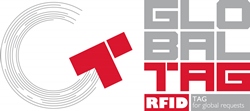RFID & NFC Chips
The chip is an electronic component where there are the user’s information and has within it an electrical circuit . In RFID (and NFC) technology, the chip is the brain of the tag.
RFID passive tag (or transponder) is a primary component of RFID system. Generally they are placed on the objects to identify, and thanks to the electromagnetic field generated by the controller, they are “activated” sending their chip memory information. A RFID tag, in fact, is composed by 3 parts:
AN ANTENNA that allows the propagation of the electromagnetic field
A CONDENSER that works as a battery: when the antenna receives the signal of the electromagnetic field generated by the controller, it charges producing the needed energy to send the information there are in the chip through the antenna.
A CHIP che come detto è la parte che contiene le informazioni circa l’oggetto al quale è posto.
Depending on the frequency, needs of memory and application needs, nowadays we have many kinf of transponders. With this section our purpose is to underline the main chips that are used in RFID sector.The link below is a summary diagram with tha main features of each tag.
Below again we divided single chip for its frequencies with the links of single technical datasheet.
CHIP RFID LF 125Khz
CHIP RFID HF 13,56MHz
CHIP RFID UHF 868-915MHz
NFC Chips are differentfrom RFID chips only for its internal composition. They work with HF frequancies (3,56MHZ)and the follow the RFID ISO14443 standard. Inside the chips considered NFC (The entity that defined this chip family is the NFC FORUM) there are chips that are present also in RFID HF 13,56MHz section; so because some of these chips are considered NFC Compliant, and it means that they follow the guidelines regarding the formatting but theyhaven’t preformatted memory.
Below the main chips that are defined NFC and NFC Compliant.



